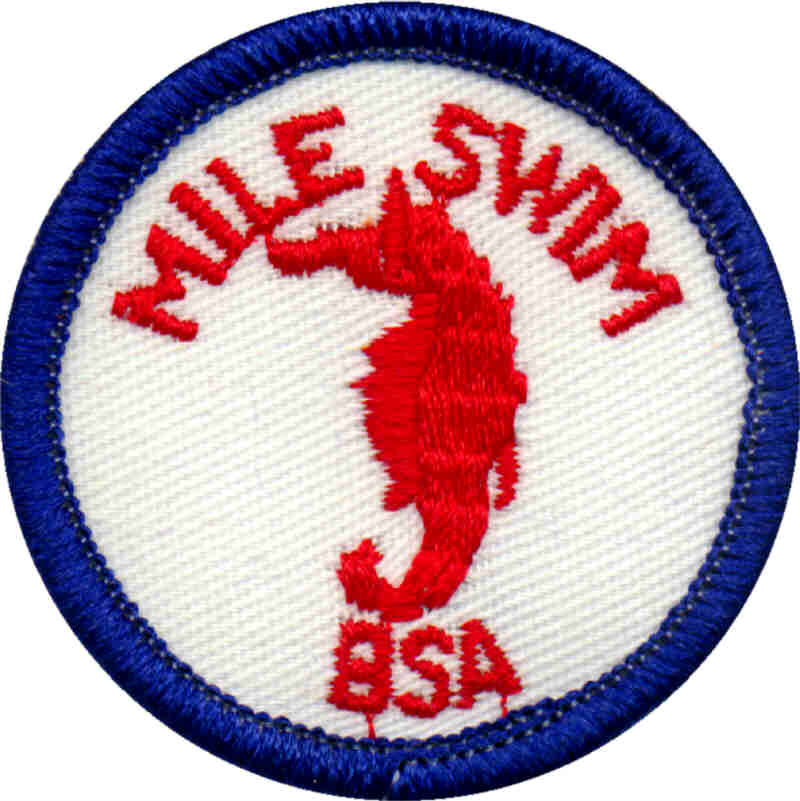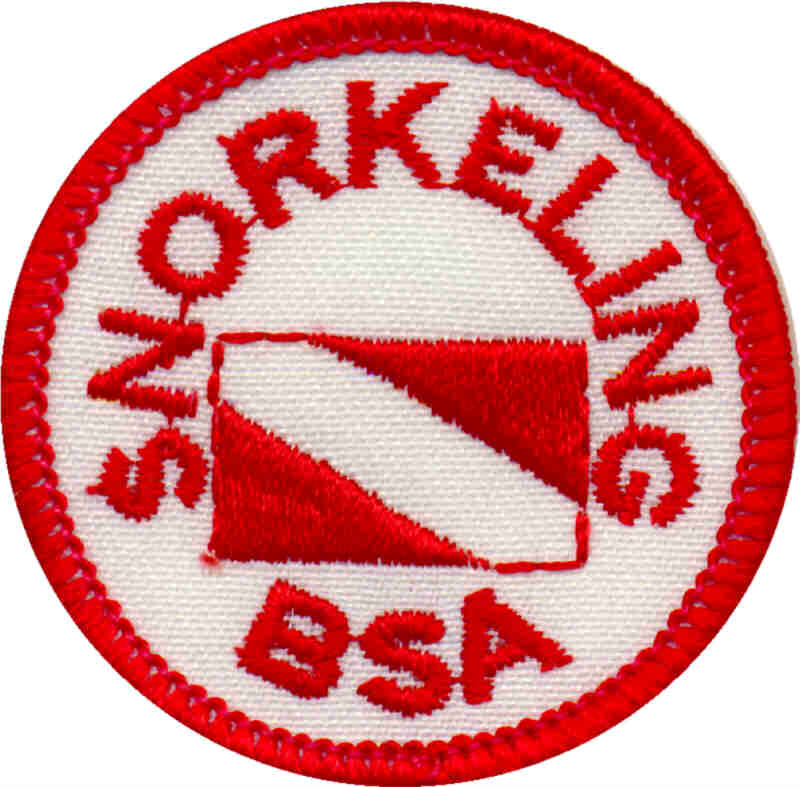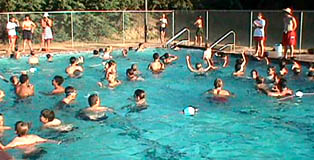LIFE GUARD ACADEMY
June 18 - 24, 2017

What does it take for your unit to have a certified BSA Life Guard? Why not two in case one Scout can't make it to an outing? BSA Life Guards are essential requirements for any BSA Aquatics Program.
This summer at Rancho Alegre a special five and a half day program has been established to train Scouts to be a BSA Life Guard.
Send your Scouts to this important water camp!
Join us at Rancho Alegre for a great 5-1/2 day aquatic experience.

 You can be qualified as a BSA Lifeguard (an intensive 35 hour training course), complete your CPR, earn Snorkeling BSA, complete your mile swim requirements, and complete the SCUBA, BSA orientation course. (This is not a certification course, but an introductory session where you will learn some of the basics of SCUBA diving, and try some of the equipment.)
You can be qualified as a BSA Lifeguard (an intensive 35 hour training course), complete your CPR, earn Snorkeling BSA, complete your mile swim requirements, and complete the SCUBA, BSA orientation course. (This is not a certification course, but an introductory session where you will learn some of the basics of SCUBA diving, and try some of the equipment.)
You can also learn the basics of canoeing and rowing, as well as enjoy some free time at the rifle or archery range.
To be trained as a BSA Lifeguard, you must successfully complete the course as outlined in the BSA Lifeguard Instructor Manual and demonstrate the ability to perform each item specified in the following requirements:
Prerequisites
Before doing requirements 6 through 26, complete the following:
- Submit proof of age. You must be at least 15 years old to participate.
- Submit written evidence of fitness for swimming activities (signed health history).
- Swim continuously for 550 yards, including at least 100 yards each of the following strokes in good form: front crawl, breaststroke, elementary backstroke, and sidestroke.
- Immediately following the above swim, tread water for two minutes using the legs only and with the hands under the armpits.
- Starting in the water, swim 20 yards using a front crawl or breaststroke, surface dive 7 to 10 feet, retrieve a 10-pound object, surface, swim with the object 20 yards back to the starting point with both hands holding the object, and exit the water, all within 1 minute, 40 seconds.
Requirements
Complete the following requirements within a 120-day period:
- Show evidence of current training in American Red Cross First Aid and American Red Cross CPR/AED for the Professional Rescuer or equivalent (includes any training for a camp health officer recognized by BSA national camp standards).
- Demonstrate reaching assists from the deck using an arm, a rescue tube, and a pole.
- Demonstrate throwing assists using a throw bag and a ring buoy with a line attached. Throw each device such that the line lands within reach of a conscious subject 30 feet from shore.
- Demonstrate:
- Rescue of a conscious subject in deep water using a rescue board, kayak, rowboat, canoe, or other rescue craft that would be available at your local facility.
- Repeat for an unconscious subject.
- Demonstrate an entry and front approach with a rescue tube to a conscious subject in deep water 30 feet away from shore. Position the rescue tube to support the subject and then assist the subject to safety, providing direction and reassurance throughout.
- Demonstrate an entry and rear approach with a rescue tube to a conscious subject in deep water 30 feet away from shore. Secure and support the subject from behind and then move the subject to safety, providing direction and reassurance throughout.
- Demonstrate use of a rescue tube to assist two subjects grasping each other. Secure, support, and reassure both subjects. With the assistance of a second guard, calm and separate the subjects and move them to safety.
- Demonstrate both front and rear head-hold escapes from a subject's grasp.
- Demonstrate a feet-first entry in deep water with a rescue tube and swim an approach stroke 25 yards within 25 seconds while trailing the tube.
- Demonstrate an entry and front approach with a rescue tube to a face-down passive subject 30 feet away at or near the surface in deep water. Use a wrist roll to position the subject face-up on the rescue tube, tow them to safety, and remove them from the water with assistance within two minutes. Immediately perform a primary assessment and demonstrate one-person CPR for three minutes.
- Demonstrate an entry and rear approach with a rescue tube to a face-down unconscious subject 30 feet away at or near the surface in deep water. Position the subject face-up, tow them to safety, and remove them from the water with assistance within two minutes. Immediately perform a primary assessment and demonstrate two-person CPR for three minutes.
- Demonstrate in-water ventilation of an unconscious subject when prompt removal from the water is not possible. Open the airway, position the mask, and simulate ventilations.
- Demonstrate an entry and approach with a rescue tube for use when an unconscious subject is submerged face-down at or near the bottom in 6 to 8 feet of water. Bring the subject to the surface and tow to the nearest point of safety.
- Remove a subject from the water using each of the following techniques in the appropriate circumstances with the aid of a second rescuer:
- Vertical lift at the edge of a pool or pier using a backboard
- Walking assist
- Beach drag
- Participate in multiple-rescuer search techniques appropriate for a missing subject in murky water:
- Line search in shallow water
- Underwater line search in deep water without equipment
- Underwater line search in deep water with mask and fins
- Demonstrate in-line stabilization for a face-down subject with suspected spinal injury in very shallow water (18 inches or less).
- Demonstrate in-line stabilization for a suspected spinal injury in shallow water (waist to chest deep):
- For a face-up subject
- For a face-down subject
- Demonstrate in-line stabilization for a suspected spinal injury in deep water, swim the subject to shallow water, confirm vital signs, and with the assistance of three others, remove the subject from the water using a backboard with straps and a head immobilization device.
- Demonstrate care for a spinal injury on land in the following situations:
- Non-standing subject
- Standing subject including securing to a backboard and lowering to the ground
- Correctly answer 80 percent of the questions on the BSA Lifeguard knowledge test covering the course material. Review any incomplete or incorrect answers.
- Serve as a lifeguard, under supervision, for at least two separate BSA swimming activities for a combined time of two hours. Afterward, discuss the experience with the lifeguarding instructor.
Completion Options
Course completion cards are valid only when signed by either a current BSA Aquatics Instructor or BSA Lifeguard Instructor approved by the local council. Training is valid for two years, provided First Aid and CPR/AED for the Professional Rescuer training are kept current during that period.
There are five ways to obtain a course completion card:
- Course Completion—Complete all requirements in the instructor manual during a scheduled course of instruction. The participant must attend all course sessions. Makeup sessions are allowed at the instructor's discretion. If an individual is unable to complete all requirements during the scheduled course, the instructor may elect to continue training until the participant is able to complete all the requirements provided the total elapsed time from start to finish does not exceed the 120-day period.
- Renewal Challenge—Anyone with a BSA Lifeguard completion card that is current or has expired within six months may renew or extend the training by performing requirements 2 through 25 without attending the standard course sessions. Prior to the testing, the instructor may provide a renewal training session to review and update skills and information. Summer camp aquatics directors should renew training for aquatics staff members during precamp training while emphasizing local camp facilities, procedures, and emergency action plans.
- Crossover Challenge—Anyone who holds current training in American Red Cross Lifeguarding, American Red Cross Waterfront Lifeguarding, or other lifeguard training programs may obtain a BSA Lifeguard completion card by performing requirements 1 through 26 without attending the standard course sessions. The lifeguard training program that issued the training certificate must be recognized by the local or state regulatory agency that sets standards for lifeguards at youth camps. The instructor may provide a crossover training session to review and update skills and information prior to the testing. The applicant may receive credit for requirement 26 if within the past 18 months he or she has served as a lifeguard, under supervision, or has supervised lifeguards, for at least two separate BSA swimming activities for a combined time of two hours. Otherwise, due to BSA procedures not implemented at other lifeguarding venues, the applicant must accomplish requirement 26.
- Completion of BSA Aquatics Instructor—Anyone who completes BSA Aquatics Instructor training at National Camping School may obtain a BSA Lifeguard completion card.
- Co-Instructors: (BSA Aquatics Instructor or BSA Lifeguard Instructor) may each sign a completion card for the other at the conclusion of a BSA Lifeguard course if they satisfy requirements 2 through 24.
Requirements revised effective May 2, 2013

Dates: June 18-24, 2017
Time: Noon. Sunday to 3:00 pm Friday. Be prepared to start Sunday afternoon. Arrival is Sunday morning.
Location: Rancho Alegre, near Lake Cachuma. A camp facility and outdoor education school owned and operated by the Los Padres Council, Boy Scouts of America.
Eligibility: This camp is open to all Scouts/Venturers and community members (male or female) age 15 (or completed the 8th grade) and up. (Adults may also attend and take the course as well.)
Medical Forms: All participants must submit the appropriate medical forms at registration in order to participate in this program: Standard BSA Medical Form (March 2014 version) 
Accommodations: “Bunk-house” style dormitories with individual showers (bring your own bedding and towel).
Camp Fee includes:Lodging, meals, and all program materials.
Cost: $350; if registered and paid in full by April 30, 2017, the fee is only $335.
Want to register? Click here for a 2017 registration packet and forms. Print a copy to share with others who might be interested in such a program.
To register and pay online, click here. Forms will need to be completed and mailed into the Rancho Alegre Program Office. Online payment must be made by direct bank withdrawal (ACH), and not by Debit Card or Credit Card.
To download the latest BSA annual medical form (March 2014 version), go to this web address: http://www.scouting.org/scoutsource/HealthandSafety/ahmr.aspx